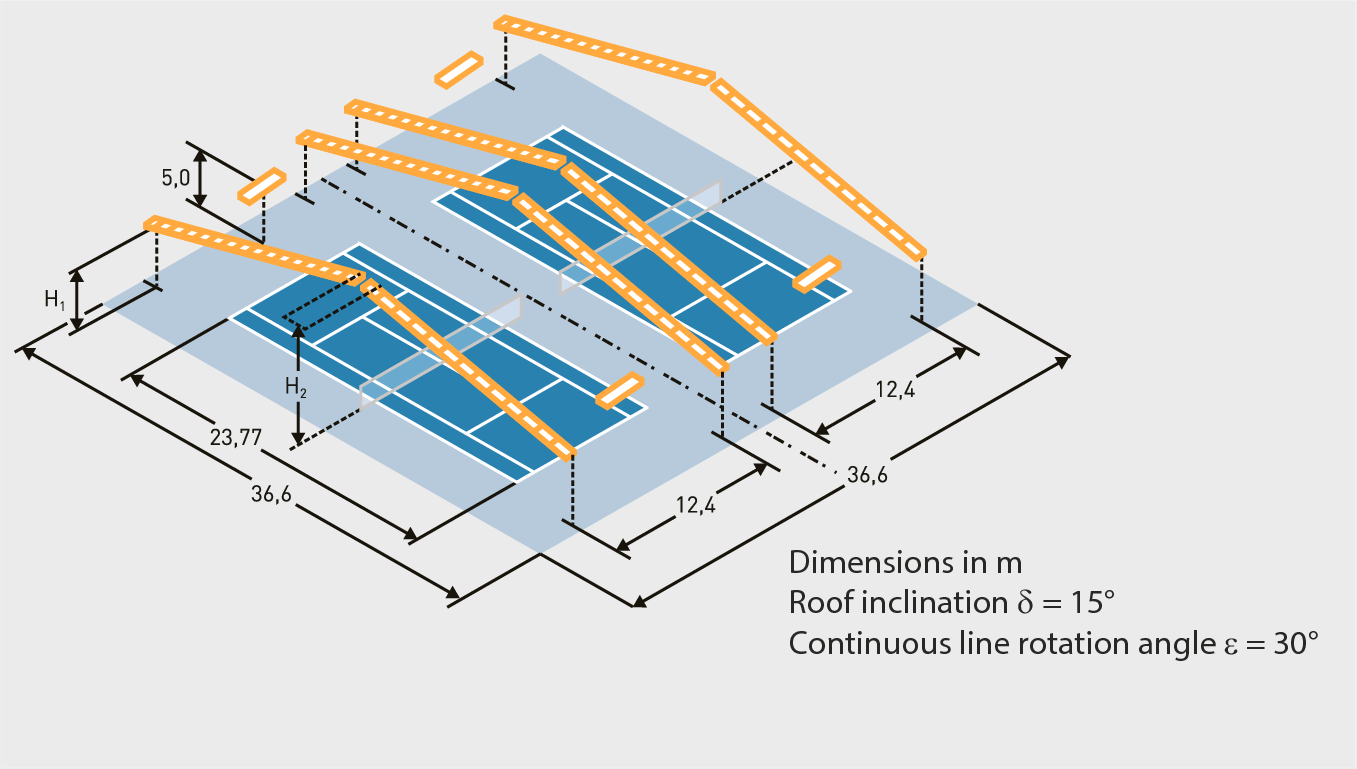The internationally specified dimensions for tennis courts (23,77 m · 10,97 m) and the accordingly specified safety distances from baseline and sidelines form an unobstructed area of 36,0 m · 18,0 m per playing field. It has proven practical to extend the sporting area to be illuminated by the "margin", meaning by 3 m beyond the baseline. In addition to ball-impact safety according to DIN 18032 (see chapter "Ball-impact safety"), luminaires for tennis halls must also be protected against penetration by tennis balls, i.e. the aperture width of the luminaire covers (louvres, grids) must be smaller than 60 mm.
Lighting of tennis halls
In practice, an installation for 750 lx (class I) with the option of regulating down to 500 lx (class II) or 300 lx (class III), possibly in connection with payment machines, has proven functional. Lighting classes are not just in demand regarding competitions, but often also in leisure sports due to a desire for an enhanced experience and lighting comfort. For this purpose, LED luminaires which can be dimmed to the required level can be used. The luminaires are arranged parallel to the sidelines and outside of the playing field and pivoted towards the playing field (rotation angle ϵ = 30°) to increase the utilization factor. For diagonally ascending roofs, the luminaire rows should follow the roof inclination to facilitate recognition of high-flying balls. For similarly good illumination of the "margin", two luminaires each are arranged 3,0 m behind and parallel to the baseline.
To avoid changing adaptation when looking onto dark, unoccupied adjacent fields of play and to facilitate visual communication with the entire hall, lighting on adjacent areas should also be powered on.

Figure 3.106: Examples for lighting arrangements in a tennis hall: Continuous lines for field of play lighting and individual luminaires for margin lighting.